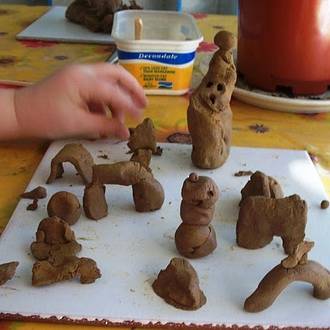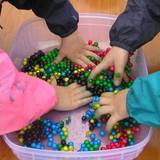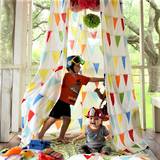Shop
02037
https://www.under5s.co.nz/shop/Hot+Topics+Articles/Activities/Things+to+make/9+Benefits+of+playing+with+clay.html
9 Benefits of playing with clay
|
Clay is very versatile and there are so many ways toddlers and preschoolers can play and experiment with it. Clay gives them the opportunity to be creative and learn about texture, shape and form whilst having lots of fun. Check out some of the other benefits.
|
You might also be interested in ...
Tapioca pearls sensory play activity
This tapioca pearls sensory play activity is lots of fun and cheap and easy to do at home. The tapioca pearls are soft, squishy and sticky and kids will have a blast mixing them altogether then scooping them out into bowls, ice cube trays and containers.
Indoor activities for toddlers
Here are some fun indoor activities for toddlers that you can do to encourage learning through play. As a parent or caregiver, let your inhibitions go, be silly, forget the mess and play with your toddler.
join usJoin us on social media for all our latest news. |
sign upSign up and receive our latest newsletters. |
|







Clay gives them the opportunity to be creative and learn about texture, shape and form whilst having lots of fun.
9 Benefits of playing with clay
1. Manipulating clay helps toddlers and preschoolers to develop their hand and eye co-ordination as they pound, pat and push the clay into shapes and objects.
2. Clay also helps toddlers and preschoolers develop the small muscles in their fingers and hands, known as fine motor skills, as they pinch, squeeze and prod the clay, adding detail to the shape or object.
3. Through this manipulation, toddlers and preschoolers can express their thoughts and ideas as they mould the clay to take on the form of their imagination.
4. Toddlers and preschoolers can experiment with literacy and numeracy concepts as they use clay to create letter, number and shape formations.
5. Facilitating toddlers and preschoolers to create their own name, their age, street address, or the names of people in their family makes learning meaningful.
6. Clay can also be used to visually represent your toddler's or preschooler's culture as it is moulded to represent meaningful symbols and patterns.
7. You can support your toddler or preschooler with clay play by providing an unhurried, spacious environment so that time can be spent developing and revisiting their work.
8. Regular access to clay provides toddlers and preschoolers with opportunities to build on their knowledge, verbalise their thoughts and ideas, and add detail to their work.
9. Skills toddles and preschoolers develop when playing with clay include imagination, perseverance, problem solving, teamwork, social interaction and self- regulation.
Clay tips
More kids activity articles to enjoy:
Source: This article was written by Nurtured At Home - providing high quality learning environments in a safe and nurturing home.
Image source: letthechildrenplay.net